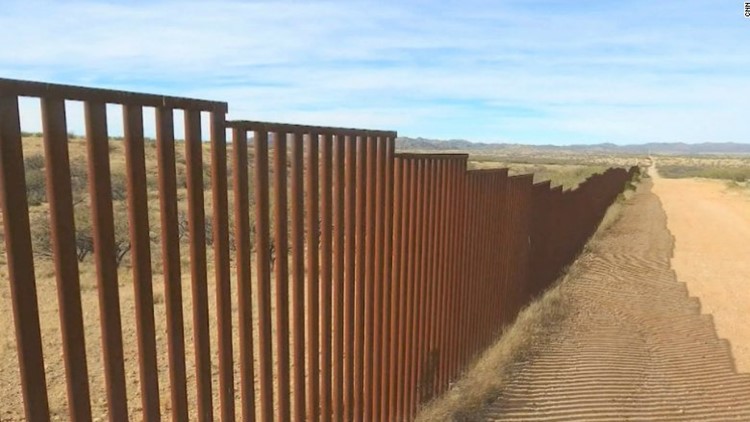(CNN) — The Department of Homeland Security announced Thursday which vendors have been selected to build some protoypes for President Donald Trump’s promised US-Mexico border wall, a step forward for the project after months of delays.
The announcement came after the Government Accountability Office on Friday dismissed a protest filed on the contract awards that had delayed the projects, wrapping early a process that could have pushed the delay into November. DHS had originally targeted June for the beginning of construction, but the process had dragged further into the summer as the contracts were decided.
Customs and Border Protection’s acting Deputy Commissioner Ronald Vitiello announced that the top designs for a concrete wall that will be built along the San Diego border will be from four companies. There were two requests for proposals: a 30-foot high concrete wall design and then any other alternatives. The latter will be announced in the next week, CBP said.
The four companies named to build were Caddell Construction Co (DE), LLC, of Montgomery, Alabama; Fisher Sand & Gravel Co., DBA Fisher Industries, of Tempe, Arizona; Texas Sterling Construction Co., of Houston, Texas; W. G. Yates & Sons Construction Company, of Philadelphia, Mississippi.
CBP has said it anticipates building four to eight prototypes and said Thursday it expects construction to begin this fall.
In late July, CBP’s legislative affairs office sent out a memo, obtained by CNN, that two companies that were not selected to be finalists — who then were asked to submit more detailed proposals — filed a total of four protests of the process. While two of the protests, from WNIS, were dismissed, two from Penna Group were put under review by GAO.
On Friday, in an announcement of the dismissal of the protest, CBP did note that once contracts are awarded, companies will have another opportunity to protest, which could add further delays. Nevertheless, CBP said “we are confident in our processes, and we will proceed deliberately, to ensure compliance with the law.”
The prototypes will “help us create a ‘design standard’ for operational walls,” CBP said. “The new designs would be added to our menu of existing designs, and allow us to tailor a specific wall design to the unique demands of individual areas of the border.”
The money for the process came from $20 million that Congress authorized the Department of Homeland Security to pull from other places in the budget earlier this year. Congress has not yet authorized any further money to actually build new miles of wall, though Trump has issued a threat to shut down the government if they don’t do so this year.
Each prototype award will be worth roughly $400,000 to $500,000, Vitiello said.
Prototypes were selected “based on their abilities to meet the requirements in the proposal,” he said, and once the prototypes are built, they will be evaluated for their effectiveness in a real-world environment. CBP could ultimately use all or none of the wall types along the border, Vitiello said, in addition to existing bollard fence designs that are used on the “immediate border.”
Vitiello emphasized that CBP is looking for a “more holistic view” on border security, including cameras, sensors and an enforcement zone in the wall plan. Vitiello showed diagrams of plans for border solutions in both urban and rural areas, which included a “see-through” design, usually a bollard fence, along the immediate border, a zone for enforcement, and then a secondary barrier with the cameras and sensors. The concrete proposals are largely for that secondary barrier, Vitiello said.
“All those things have to be combined in the proper mix to make it work,” Vitiello said, saying each location will be evaluated for the different options.
All told, the process to evaluate the prototypes will take roughly three months once CBP gives companies notice to proceed. Vitiello said that will be “as quickly as we can,” ideally in two weeks.



